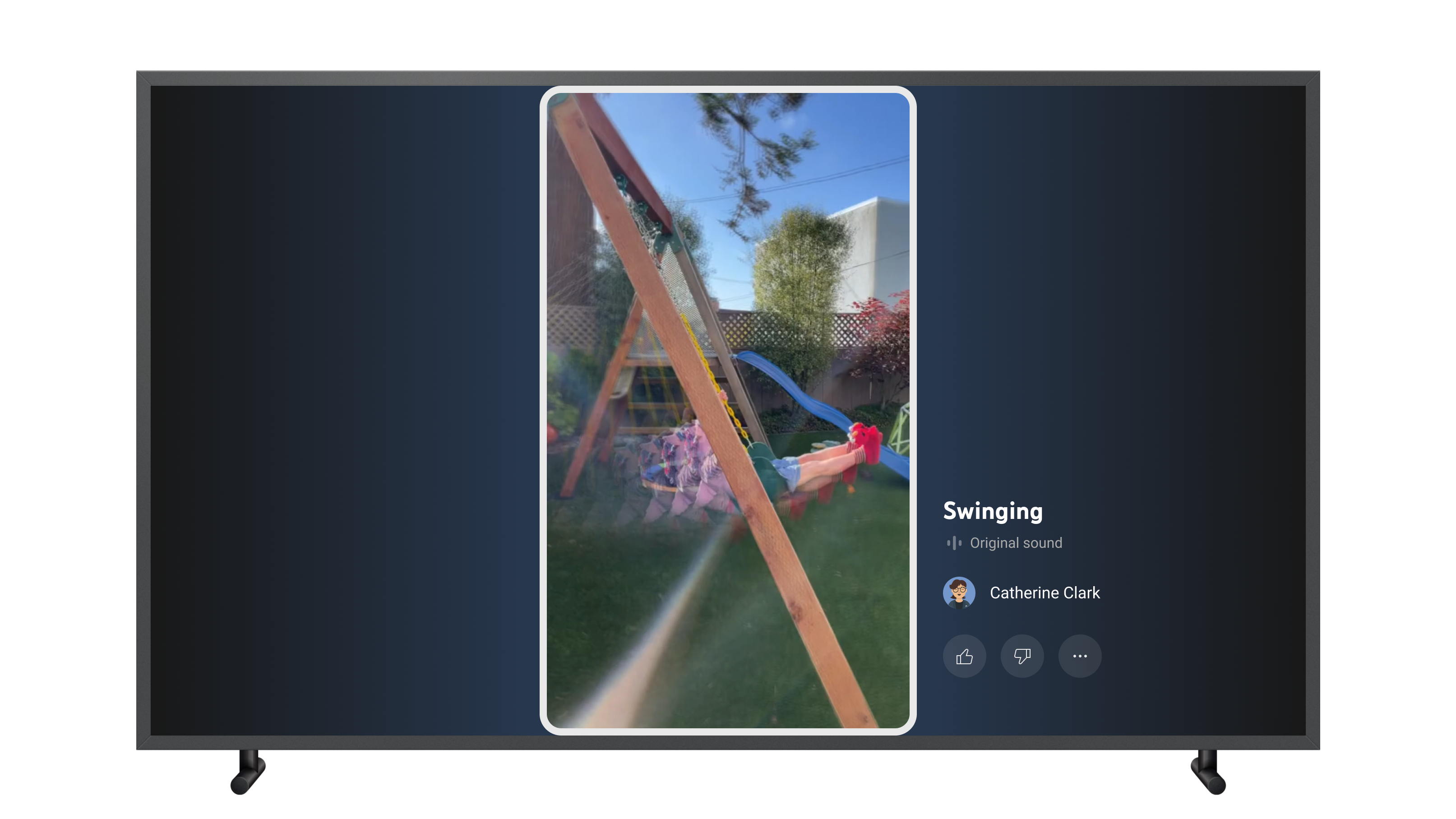YouTube wants to take on TikTok and put its Shorts videos on your TV
Short-form video is coming to the home of long-form content.

YouTube Shorts, the video website’s TikTok-like feature, has become one of its latest obsessions, with more than 1.5 billion users watching short-form content on their devices every month.
And now YouTube wants to expand that number by bringing full-screen, vertical videos into your TV, MIT Technology Review can reveal.
From today, users worldwide will see a row of videos from Shorts high up their display on YouTube’s smart TV apps. The videos, which will be integrated into the standard homepage of YouTube’s TV app and will sit alongside longer, landscape videos, are presented on the basis of previous watch history, much as in the YouTube Shorts tab on cell phones and the YouTube website.
“It is challenging taking a format that’s traditionally a mobile format and finding the right way to bring it to life on TV,” says Brynn Evans, UX director for the YouTube app on TV.
The time spent developing the TV app integration is testament to the importance of Shorts to YouTube, says Melanie Fitzgerald, UX director at YouTube Community and Shorts. “Seeing the progression of short-form video over several years, from Vine to Musical.ly to TikTok to Instagram and to YouTube, it’s very clear this format is here to stay.”
One major challenge the designers behind YouTube Shorts’ TV integration had to consider was the extent to which Shorts videos should be allowed to autoplay. At present, the initial design will require viewers to manually scroll through Shorts videos once they’re playing and move on to the next one by pressing the up and down arrows on their TV remote.
“One piece we were playing with was how much do we want this to be a fully lean-back experience, where you turn it on and Shorts cycle through,” says Evans, whose team decided against that option at launch but does not rule out changing future iterations.
The design presents a single Shorts video at a time in the center of the TV screen, surrounded by white space that changes color depending on the overall look of the video.
One thing YouTube didn’t test—at least as of now? Filling the white space with ads. YouTube spokesperson Susan Cadrecha tells MIT Tech Review that the experience will initially be ad-free. The spokesperson did say that ads would likely be added at some point, but how those would be integrated into the Shorts on TV experience was not clear.
Likewise, the YouTube Shorts team is investigating how to integrate comments into TV viewing for future iterations of the app. “For a mobile format like this, you’d be able to maybe use your phone as a companion and leave some comments and they can appear on TV,” says Evans.
YouTube’s announcement follows TikTok’s own move into developing a TV app. First launched in February 2021 in France, Germany, and the UK and expanded into the United States and elsewhere in November that year, TikTok’s smart TV app hasn’t largely altered how the main app works. (Nor, arguably, has it become an irreplaceable part of people’s living room habits.)
However, the shift to fold Shorts into the YouTube experience on TV suggests how important YouTube feels the short-form model is to its future. “It’s very clearly a battle for attention across devices,” says Andrew A. Rosen, founder and principal at media analyst Parqor. “The arrival of Shorts and TikTok on connected TVs makes the competitive landscape that much more complex.” Having ceded a head start to TikTok, YouTube now seems determined to play catchup.
The team behind the initiative still isn’t fully certain how adding short-form video into the YouTube on TV experience will be embraced. “It still remains to be seen how and when people will consume Shorts,” admits Evans—though she tells MIT Tech Review that informal polling and qualitative surveys, plus tests within the Google community, suggest “a very positive impression of Shorts from people who are watching YouTube on TV.” YouTube said that viewers worldwide spent 700 million hours a day watching the app on their TV.
“Will it be a game-changer in the living room? Yes and no,” says Rosen. “Yes in the sense that it will turn 15-second to 60-second clips into competition for every legacy media streaming service, and Netflix is betting billions on content to be consumed on those same TVs. No, because it's not primed to become a new default of consumption.”
Correction: we updated the data on time spent watching youTube on TV
Keep Reading
Most Popular
Large language models can do jaw-dropping things. But nobody knows exactly why.
And that's a problem. Figuring it out is one of the biggest scientific puzzles of our time and a crucial step towards controlling more powerful future models.
The problem with plug-in hybrids? Their drivers.
Plug-in hybrids are often sold as a transition to EVs, but new data from Europe shows we’re still underestimating the emissions they produce.
Google DeepMind’s new generative model makes Super Mario–like games from scratch
Genie learns how to control games by watching hours and hours of video. It could help train next-gen robots too.
How scientists traced a mysterious covid case back to six toilets
When wastewater surveillance turns into a hunt for a single infected individual, the ethics get tricky.
Stay connected
Get the latest updates from
MIT Technology Review
Discover special offers, top stories, upcoming events, and more.